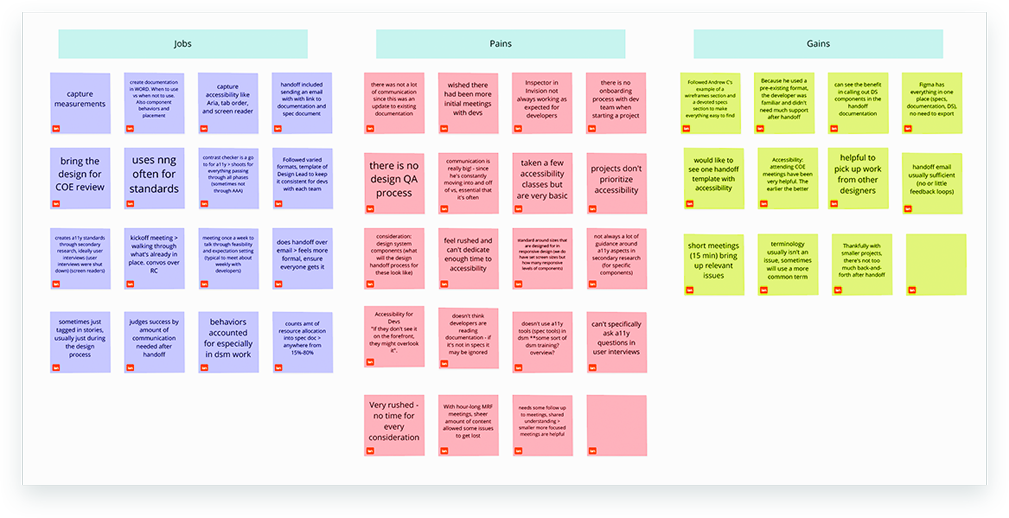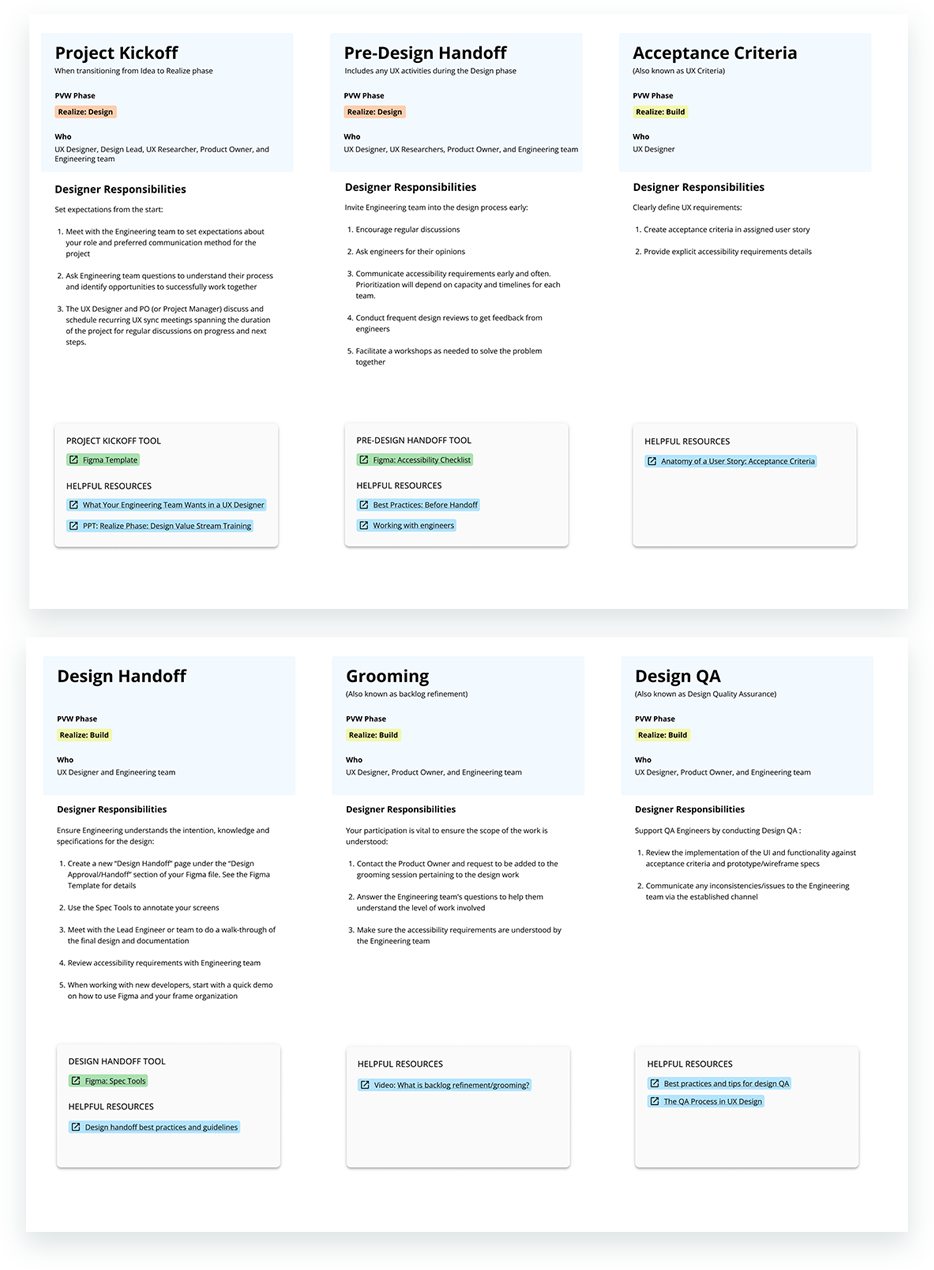
Design Handoff
Overview
The lack of standardization around our design handoff was creating inconsistencies between designs and development. Developers were not receiving consistent documentation, and this was causing redundant feedback loops and unclear expectations.
My Role
Planning
Leadership
UX Research
Implementation
Documentation
The Challenge
Establish a standardized design handoff process that ensures clear communication and collaboration between designers and development teams.
- Develop standards for the design handoff process while prioritizing accessibility
- Align the new process with the Design System
- Promote collaboration between designers and development teams


The Process
Design Team Initiative
This initiative emerged from feedback within the design team. I took the lead in driving a solution, collaborating closely with two equally passionate UX designers. With full autonomy over the workload and execution, we developed a roadmap to guide the essential project activities.


Discovery: User Interviews Unveil Critical Gaps in Design Handoff Process
Four main themes emerged from the research:
- Insufficient collaboration between designers and engineers
- Engineers’ limited understanding of the designer’s role
- Inconsistent design handoff documentation
- Lack of annotation and accessibility guidelines for designers
Enhancing Collaboration and Clarity
To address the lack of collaboration and the ambiguity surrounding the designer’s role, I developed a Design Handoff Framework to bridge these gaps. I began by thoroughly exploring the design handoff process, studying industry best practices, and reviewing relevant articles. From this research, I identified four key touchpoints essential for fostering collaboration and establishing clear expectations between designers and developers:
- Project Kickoff
- Pre-Design Handoff
- Acceptance Criteria
- Design Handoff


Template for Consistent Design File Organization
To complement the framework, we created a Figma template to address inconsistencies in design handoff documentation. This template provides clear guidelines for layer naming and organization, ensuring consistency across all design files. Additionally, it includes dedicated sections for project information, documentation links, and key contacts, promoting better organization and accessibility.
Annotation and Accessibility Guidelines for Design Files
Finally, to address the lack of annotation and accessibility guidelines in the design files, we developed comprehensive annotation and specification artifacts. These included accessibility guidelines for designers to apply as needed, ensuring consistency and inclusivity in the design process.


Results
We made the resources available for designers across the organization. As part of the launch, a meeting with all UX designers was scheduled. My team and I presented our research findings and the proposed resources. Overall, feedback was positive.
Next Steps The biggest challenge will be getting buy-in from Product Owners because their teams are directly affected. My team and I will be presenting our work during one of the bi-weekly Product Owner meetings. Our goal is to advocate the benefits of these changes while keeping the level of effort minimal for development teams.